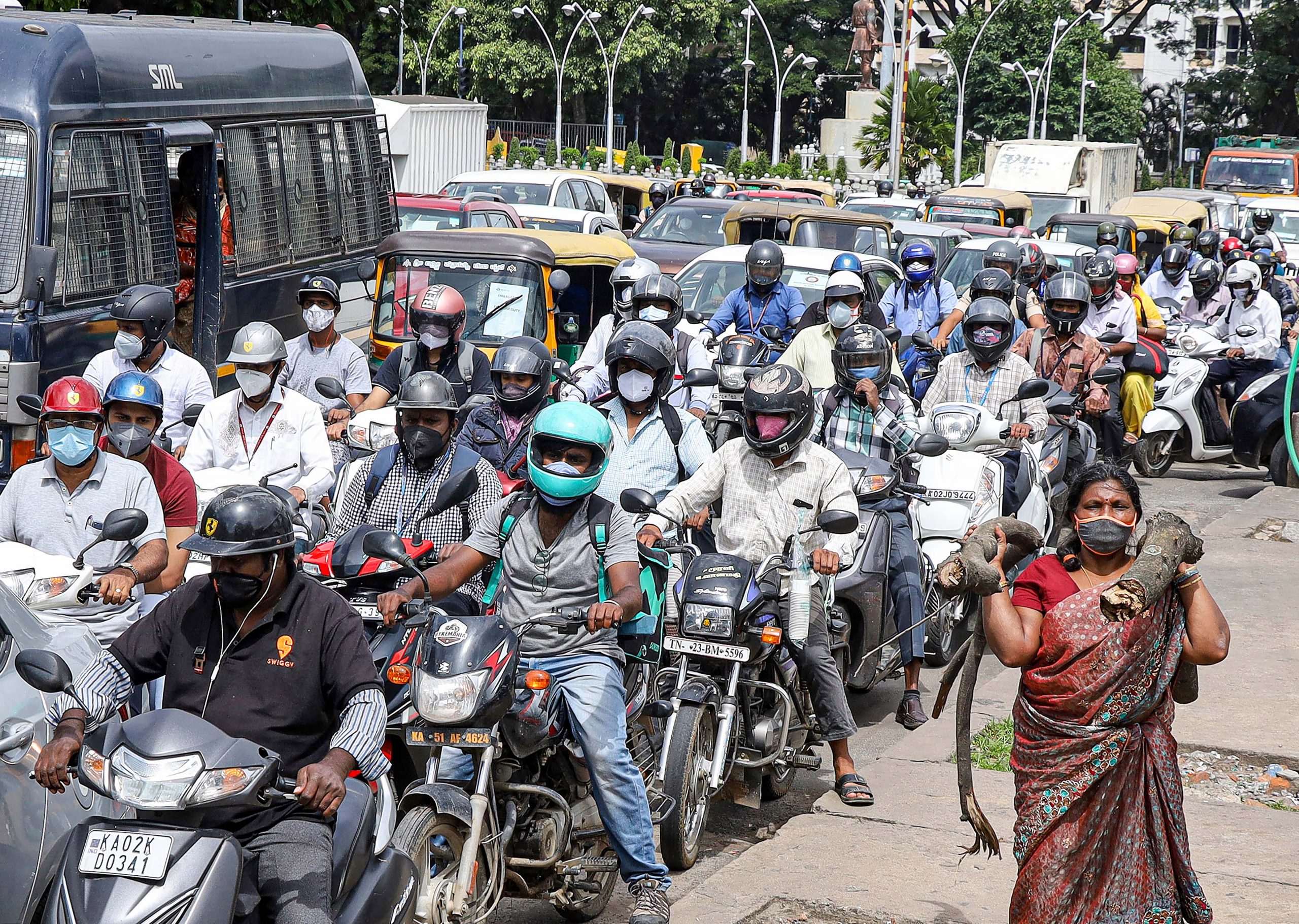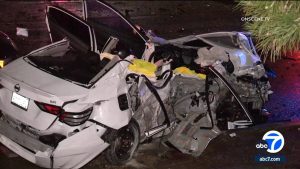The maximum speed limit set for private cars, taxis, and jeep users passing through stretches of national highways, Ring Road, Outer Ring Road and IGI airport road is 70/60 Kmph, according to the Delhi Traffic police’s revised maximum speed limit for different categories of motor vehicles plying on city roads.
Also Read | ‘Khela Hobe’ once again in Bengal with Mukul Roy, Mamata Banerjee reunion
The maximum speed limits were revised in view of the traffic scenario and safety of road users, officials said.
Earlier, the maximum speed limit for two-wheelers on national highways was 70 Kmph, which has now been reduced to 60 Kmph, while on some roads, it remains to be at 50 Kmph to bring uniformity on par with other categories of vehicles, they said.
According to the revised notification by the Delhi Traffic Police, the maximum speed limit set for M1 category vehicles has been notified as 70/60 Kmph for high speed/access controlled roads, including stretches of the national highways passing through Delhi, Noida Toll Road, Saleemgarh bypass road, Barapullah Nallah, Northern Access Road, Central Spine Road, Ring Road, Outer Ring Road, Pusta Road and IGI Airport road.
Passenger vehicles comprising not more than eight seats in addition to driver’s seat like cars, Jeeps, and cabs fall under the M1 category vehicles, police said.
Also Read | FDA rejects emergency use authorisation of Bharat Biotech’s Covaxin in US
However, the maximum speed limit set for these M1 category vehicles for all other arterial roads in the areas between Ring Road and Outer Ring Road, beyond Outer Ring Road, inside Ring Road and entire Trans Yamuna area, is 50 Kmph, the traffic police said.
Also, now the maximum speed limit for taxis and cabs is notified at par with private cars on these roads, it said.
According to the Delhi Traffic Police, the last revision of speed limits on the majority of roads and stretches was undertaken in 2011. Thereafter in 2017 and 2019, the maximum speed limit for few roads was further revised.
Meenu Choudhary, Joint Commissioner of Police (Traffic), said, “There have been a number of changes and improvements in the road infrastructure in the city in past few years, including the construction of flyovers, underpasses, high speed/signal-free corridors as well as improvement in vehicle technology.”
“Further, there was a need to make speed limit uniform on Delhi roads as far as possible. Therefore, a revision of the existing speed limits was felt necessary,” she said.
According to the revised notification, the speed limit for two-wheelers is now separately notified as 50 Kmph on the roads whereas the speed of cars is 50 Kmph, and 60 Kmph on roads where it is 70/60 Kmph.
Also Read | Beer, jewellery, and more: Perks of getting COVID-19 shot in India
The maximum speed limit for M2 and M3 category vehicles (passenger vehicles comprising nine or more seats in addition to the driver’s seat) has also been notified.
“The maximum speed limit for M2 and M3 categories vehicles has been notified as 50 Kmph on roads where speed of car is 50 Kmph, and 60 Kmph on roads where it is 70/60 Kmph, whereas the maximum speed limits for all types of transport vehicles, excluding M1, M2 and M3 category vehicles including Gramin Sewa, TSRs, Phat-Phat Sewa, Quadricycle, and N category vehicles (goods vehicles), has been notified as 40 Kmph,” a police officer said.
However, the maximum speed limit for residential areas, markets, service lanes, and for minor roads inside all residential areas, commercial markets, and service roads, has been notified as 30 Kmph, the officer said.
Earlier, the speed limit for transport vehicles in these areas was between 20-30 kmph. It has been now revised to create “uniformity”, police said.
The maximum speed limit for the loops of flyovers has been notified as 40 Kmph, the officer added.
Also Read | Kerala woman, 28, dies as partner set her on fire for posting a video online
In addition to this, police said for ‘minor roads’ at residential areas and commercial markets, the maximum speed for all vehicles is 30 kmph. Earlier, the speed for transport vehicles in these areas was between 20-30 kmph.
According to a police statement, the then Delhi Police commissioner Amulya Patnaik had constituted a Speed Review Committee under the chairmanship of Taj Hassan, Special Commissioner of Police (Traffic).
This panel includes officers from Delhi Traffic Police as well as expert members/officials from the Central Road Research Institute Delhi (CRRI) and transport department of the Delhi Government to examine the existing speed limits notified by Delhi Traffic Police in conjunction with the maximum speed limits notified by the Ministry of Road Transport and Highways, through a notification dated April 6, 2018.
The revised maximum speed limits have been notified in Delhi Gazette based on the recommendations of the Committee.
Also Read | G7 to donate 1 billion COVID vaccines, US leads with 50% of the contribution
Meanwhile, the Delhi Traffic Police has requested the civic road maintaining agencies concerned to erect the corresponding informatory signboards at all prominent locations on the roads, indicating the notified speed limits, for guidance and convenience of all road users and the general public.







